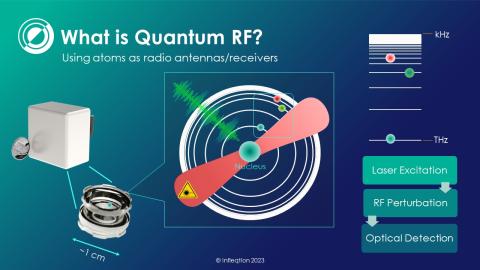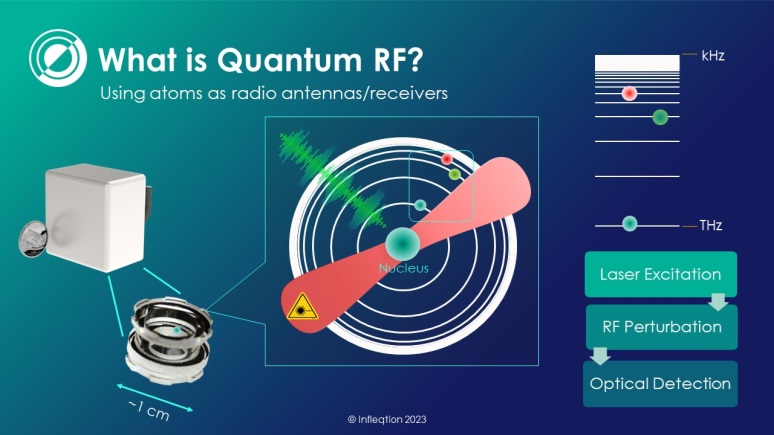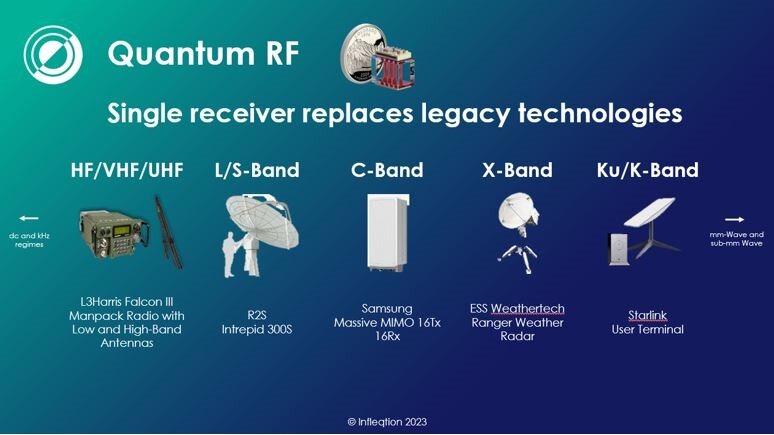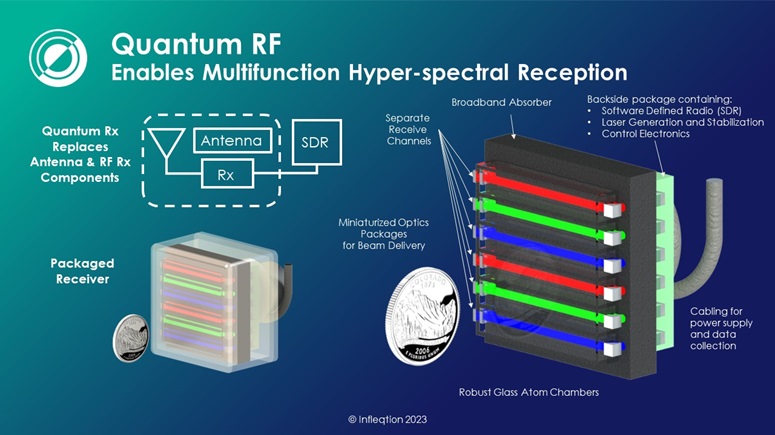AOI: Quantum Sensing Technologies
Innovation:
In this Ohio Federal Research Network proposal, Team GhostWave will demonstrate a quantum sensing system, based on the integration of Rydberg atom quantum RF electric field sensors with telecommunications band wavelength converters and RF noise radar systems. The team will quantitatively characterize system levels of quantum advantage from the integration of state-of-the-art quantum technology with state-of-the-art-classical technology. The team anticipates that the improved sensitivity of the quantum sensor will reduce system noise, thereby providing system level enhancement in dynamic range and fidelity. Wavelength conversion to the telecommunications band provides stand-off distance capability. The results have the potential to significantly impact application spaces of interest to the DoD.
Objective:
The objective of this project is to demonstrate the potential enhancements of GhostWave sensors by leveraging Rydberg atoms, operating at a lower noise floor and delivering higher fidelity with innovative quantum hardware and software.
Background:
Quantum sensors use the smallest amounts of energy and matter to detect and measure tiny changes in time, gravity, temperature, pressure, rotation, acceleration, frequency, and magnetic and electric fields. They’ve been commercially available in various forms for more than a half-century; think of a magnetic resonance imaging, or MRI, machine, which tracks flips in the magnetic spin of individual hydrogen atoms to peer into a body. But recent progress in the field suggests that such sensors will soon bring a revolution in measurement and signals intelligence—possibly by making it far easier to detect electromagnetic spectrum emissions from mobile and static platforms and facilities.
The importance of quantum sensors has largely eluded policymakers, even though the technology has been improving for decades. Part of the reason is surely the hype surrounding quantum computers, whose challenges to practicability include their need to be shielded from interacting with the rest of the universe until its computation is complete. But quantum sensors, which put this extreme sensitivity to use, are here today and rapidly improving.
The coming decades will be defined by greater reliance on measurement and sensing intelligence, brought about by electromagnetic and gravimetric quantum sensors that can see through barriers. Militaries may soon find it impossible to hide materiel and current secrecy strategies, such as using underground facilities, may be rendered ineffective.



